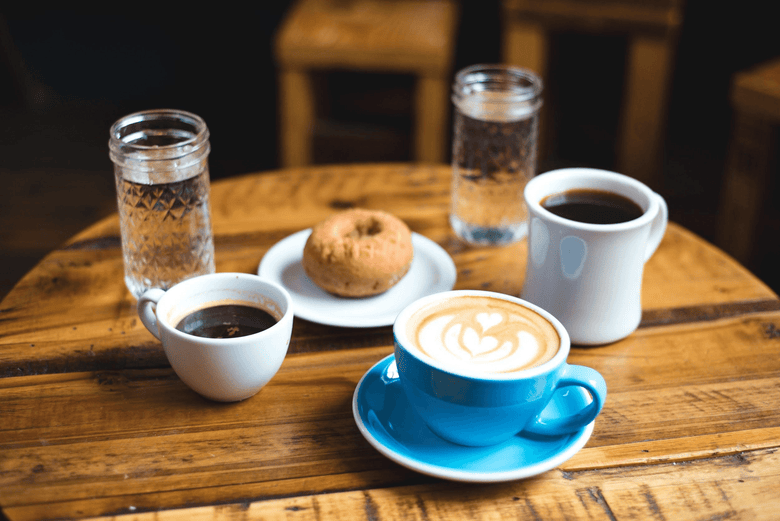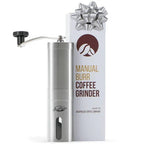A gentle, refreshing sweetness is the mark of well grown, roasted, and brewed coffee. It shows that the coffee has been cared for through every stage of the journey. It’s what we’re after.
I know you may be thinking that coffee is meant to be bitter, but not sweet. I understand, Many of us grew up on dark, bitter coffee and thought that was how it was meant to be. But there’s more to coffee. A lot more - including an element of sweetness.
Tasting sweetness in coffee is something anyone can do, but it’s a skill that can take a little bit of time to develop. To learn to taste sweetness, all you need is some high quality coffee and a growth oriented mindset.
This blog covers - you guessed it - sweetness. It’s part of our How To Taste Coffee Series, so if you’re just jumping in, you may want to head over to the start of the series before continuing on.
To understand sweetness in coffee, let’s look at where it comes from.
How We Get Sweetness In Coffee
Sweetness starts at the farm, before harvest. When a coffee cherry is ripe, it tastes sweet, flavorful, and crisp. This quality of flavor also applies to the seeds of the cherry (coffee beans). This is partly why it’s so important that pickers are well trained and paid - only ripe cherries produce sweet and balanced coffee.
The processing method also affects the coffee’s sweetness. Naturally processed coffees allow the coffee cherry to ferment slightly before the fruity mucilage is completely washed away. This adds sweetness and complexity to the coffee, but is risky, since over fermentation happens easily. Washed process coffees typically have a more refined flavor and gentle sweetness.
Read: Why Fresh Coffee Is The Best Coffee
The natural sugars, amino acids, alcohols, and glycols of coffee are transformed during the roasting process in an event called the Maillard Reaction. This series of chemical changes produces most of the sweetness and rich flavors we are able to taste in the coffee.
Maillard Reactions are all around us. When you saute onions, brown a chicken breast, or finish a steak on a hot skillet, you are causing the amino acids and sugars to form a few new, tasty compounds.
Lighter roasted coffees are known to have a fruity or floral sweetness. Darker roasted coffees more often have a darker, deeper sweetness. More on that later.
The brewing stage is the final moment of sweetness development. When freshly roasted and ground coffee is brewed with balance, the sugars come out in harmony with all the other flavors and wrap the entire experience together.
There are a lot of opportunities for sweetness to be destroyed on coffee’s journey - it’s one of the most delicate flavor elements. This is why sweet coffees are the most prized and celebrated in the world.
How To Describe Coffee Sweetness
What do you think of when you heard the word ‘sweetness’? Sugar, probably.
Sugar is correct, but we can go deeper. Raw sugar tastes slightly different than granulated sugar. Stevia leaves aren’t sugary at all, but are very sweet. And then there’s honey.
Read: 5 Things That Ruin Your Coffee
Sweetness takes many forms, but we don’t normally think of it that way. To taste and describe coffee sweetness, you have to be willing to break out of the sugar box. As always, ask yourself the magic tasting question:
What does this remind me of?

Naturally processed Ethiopian coffees are prized for their bright fruity sweetness. Some Central American coffees have a crisp floral sweetness, while others have a deep caramelized sugar taste. Sometimes the sweetness is smooth like honey. Other times it’s deep and dark like chocolate.
Every once in awhile, coffee can be so sweet that it tastes like you put a few grains of cane sugar on your tongue. These coffees are among the world’s best, but are very rare. When they’re this sweet, they often have a juicy mouthfeel as well.
Sweetness can be distinct from a coffee’s flavors (“a caramel sweetness”), but often it pairs with the flavors around it to form a more cohesive sensory experience (“a strawberry sweetness”). Both ways of approaching tasting are correct, since tasting is largely a matter of interpretation.
Read: Manual VS Electric Coffee Grinders: How To Pick The Right One
Find The Sweetness
Look for those roasters who intentionally bring out sweetness in their coffees. If they label the bag with a sweetness descriptor (“a honey sweetness”, for example), even better! Roasters who can accomplish a pleasant sweetness are skilled and worth keeping an eye on and deserve repeat purchases.
Next up in our Coffee Tasting Series: Bitterness!
Happy tasting!


